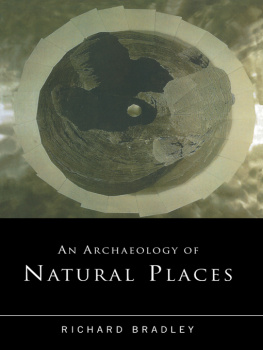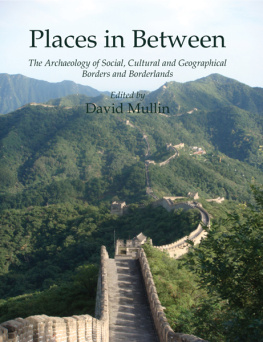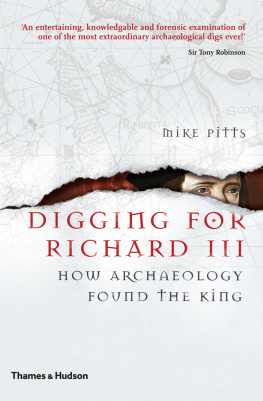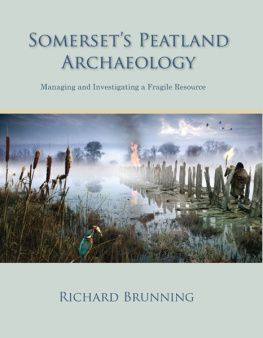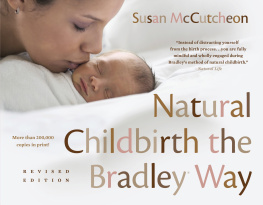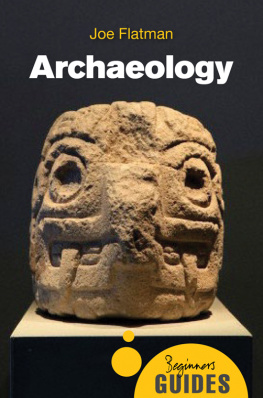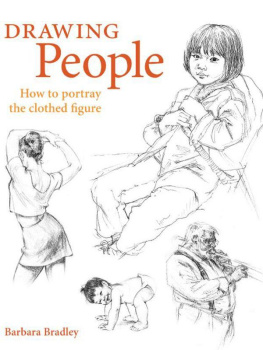An Archaeology of Natural Places
In studying settlements and monuments, archaeologists have learnt a great deal about the ways in which these sites were used during prehistory. But such studies have often been limited, for their main sources of evidence were purposefully created. Little has been said about the special importance to prehistoric people of unaltered features of the landscape.
This volume explores why natural places such as caves, mountains, springs and rivers assumed a sacred character in European prehistory, and how the evidence for this can be analysed in the field. It shows how established research on votive deposits, rock art and production sites can contribute to a more imaginative approach to the prehistoric landscape, and can even shed light on the origins of monumental architecture. The discussion is illustrated through a wide range of European examples, and three extended case studies.
An Archaeology of Natural Places extends the range of landscape studies and makes the results of modern research accessible to a wider audience, including students and academics, field archaeologists, and those working in heritage management.
Richard Bradley is Professor of Archaeology at Reading University. His main interests are prehistoric social and landscape archaeology and rock art. Among his recent books are The Significance of Monuments, Rock Art and the Prehistory of Atlantic Europe and Altering the Earth.
An Archaeology of Natural Places
Richard Bradley
First published 2000
by Routledge
2 Park Square, Milton Park,Abingdon, Oxon OX14 4RN
Simultaneously published in the USA and Canada
by Routledge
270 Madison Avenue, New York, NY 100 16
Reprinted 2002,2004,2006
Transferred to Digital Printing 2007
Routledge is an imprint of the Taylor & Francis Group, an informa business
2000 Richard Bradley
All rights reserved. No part of this book may be reprinted or reproduced or utilised in any form or by any electronic, mechanical, or other means, now known or hereafter invented, including photocopying and recording, or in any information storage or retrieval system, without permission in writing from the publishers.
British Library Cataloguing in Publication Data
A catalogue record for this book is available from the British Library
Library of Congress Cataloging in Publication Data
Bradley, Richard, 1946
An archaeology of natural places / Richard Bradley.
p. cm.
Includes bibliographical references and index.
ISBN 0-4 15-22 149-8 - ISBN 0-4 15-22 150-1 (pbk)
1. Prehistoric peoples Europe. 2. Sacred space Europe. 3. Landscape assessment Europe. 4. Europe Antiquities. I.Title.
GN803.B658 2000
936 dc2l99042197
ISBN 10: 0-4 15-22 149-8 (hbk)
ISBN 10: C 415 -22 150-1 (pbk)
ISBN 13: 978-0-4 15-22 149-8 (hbk)
ISBN 13: 978-0-4 15-22 150-4 (pbk)
Publisher's Note
The publisher has gone to great lengths to ensure the quality of this reprint but points out that some imperfections in the original may be apparent
For my friends in Scandinavia
A Saam siejdde associated with sacrifices of fish at Alta, Finmark, northern Norway
Illustrations
Figures
Frontispiece A Saami sigdde at Alta
| 1 |
| 2 |
| 3 |
| 4 |
| 5 |
| 6 |
| 7 |
| 8 |
| 9 |
| 10 |
| 11 |
| 12 |
| 13 |
| 14 |
| 15 |
| 16 |
| 17 |
| 18 |
| 19 |
| 20 |
| 21 |
| 22 |
| 23 |
| 24 |
| 25 |
| 26 |
| 27 |
| 28 |
| 29 |
| 30 |
| 31 |
| 32 |
| 33 |
| 34 |
| 35 |
| 36 |
| 37 |
| 38 |
| 39 |
| 40 |
| 41 |
| 42 |
| 43 |
| 44 |
| 45 |
| 46 |
| 47 |
| 48 |
| 49 |
Tables
Preface
In one sense this book caught me by surprise. It reflects on the results of research carried out over more than fifteen years, but locates them in a framework of which I have only recently become fully aware. In another sense, it is the result of a quite specific stimulus: a visit to the north of Norway to attend the Alta Conference on Rock Art in 1993. After the formal proceedings were over, a number of us travelled around Finmark under the guidance of Reidun Andreassen and Audhild Schanche, and had the opportunity to see and discuss some of the sacred places of the Saami. They came as a revelation to someone brought up on the monuments of western Europe, for very few of these were marked in a conventional way. They made me more aware of the unaltered places that are so often missing from the landscape archaeology of other parts of Europe. They also suggested a new perspective on my own studies of rock carvings, votive deposits and axe production sites. It is an approach that has come to dominate my current field-work in Spain, conducted jointly with Rmon Fbregas and German Delibes. I have also had the good fortune to visit rock art sites in Spain and Portugal with Javier Costas, Felipe Griado, Maria de Jesus Sanches and Paula Mota Santos, and this experience has influenced my thinking too.
The opportunity to develop these impressions came during a period of research leave from Reading University in autumn 1998, when I was able to visit the universities of Bergen, Lund and Troms. During these visits I had the chance to talk to many people about their work, to visit a number of major sites and to consult sources that were not available in Britain. Among the many people who helped me with this project were Knut Andreas Bergsvik, Jan Magne Gjerde, Cecilie Larsen, Trond Ldand Gro Mandt in Bergen, Lars Larsson and the graduate students in Lund and, in Troms, Knut Helsgog, Anders Hesjedal, Bjornar Olsen, Poul Simonsen, Stine Benedicte Steen and Inger Storli. I also learned much of interest from an earlier visit to Gothenburg organised by Kristian Kristiansen and Jarl Nordbladh, and from conversations with Neil Price in Uppsala and Flemming Kaul in Copenhagen. It is only right that the book should be dedicated to my friends in Scandinavia.
Back in Britain, parts or all of the text have been read by Lara Alves, Martin Henig, Andy Jones and Sturt Manning, and I am grateful to them all for their comments and good advice. I must also thank Knut Andreas Bergsvik, Trond Lden, the Ashmolean Museum, Oxford, and the Pitt Rivers Museum, Oxford, for providing plates and for allowing me to reproduce them here. An earlier version of part of was published in the Oxford Journal of Archaeology, and I am grateful to the editors and publisher for permission to use this material in the book. All the original artwork is by Mel Costello. He has been helpful, creative and wonderfully efficient. The quality of his drawings speaks for itself, and the appearance of my originals must remain a secret.



